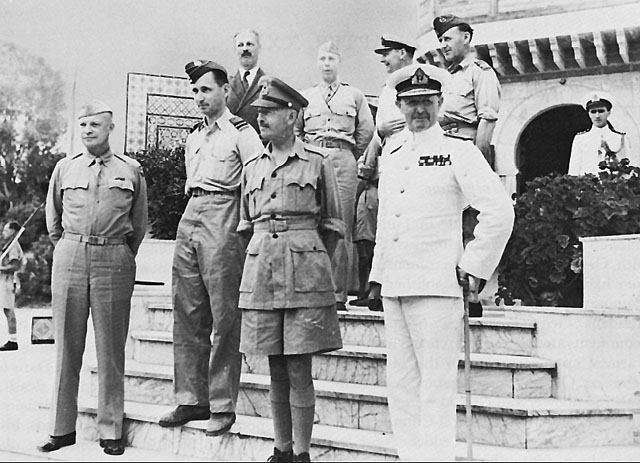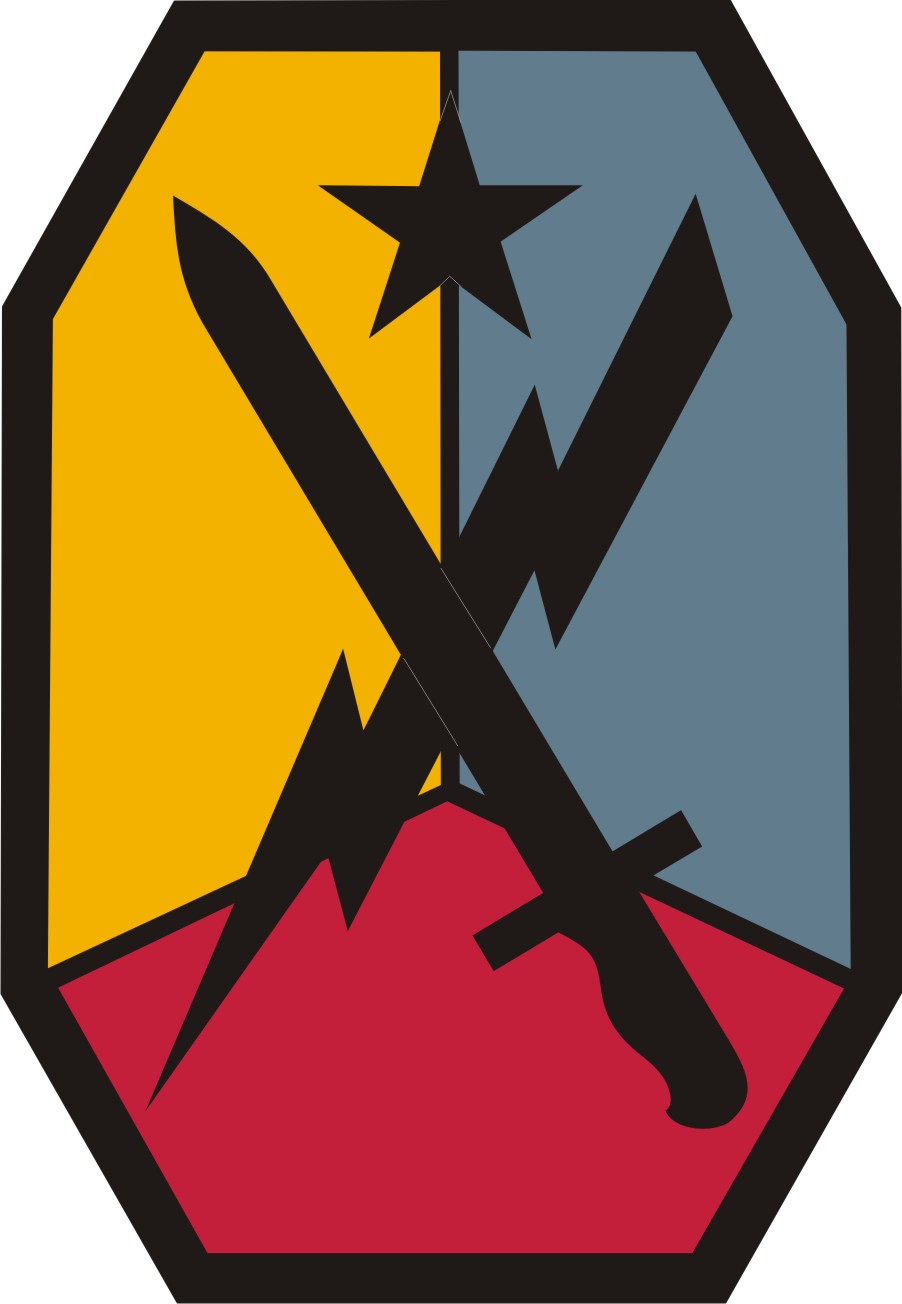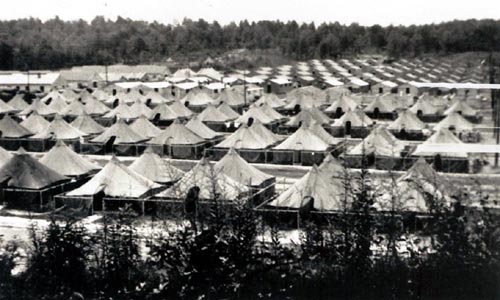|
511th Infantry Regiment
The 511th Parachute Infantry Regiment (511th PIR) was an airborne infantry regiment of the United States Army, first activated during World War II under Colonel Orin D. "Hard Rock" Haugen. It formed the parachute infantry element of the 11th Airborne Division. The full history of the regiment is the subject of the book, ''When Angels Fall: From Toccoa to Tokyo, the 511th Parachute Infantry Regiment in World War II'' (2019) by author and historian Jeremy C. Holm whose grandfather served in the regiment's Company D during the war. Activation and Training The 511th PIR was formed at Camp Toccoa, GA, in January 1943 and in March transferred to Camp Mackall, NC before heading to Fort Benning, GA, battalion by battalion for jump training. After the difficulties encountered by Allied airborne operations during Operation Husky in July 1943, from 6–10 December the 511th PIR took part in the successful Knollwood Maneuver that secured the future of American airborne units. After final ... [...More Info...] [...Related Items...] OR: [Wikipedia] [Google] [Baidu] |
Armorial Of The United States Army
Coats of arms of US Army units are heraldic emblems associated with units in the US Army. Under Army Regulation 840-10, each regiment and separate table of organization and equipment (TOE) battalion of the US Army is authorized a coat of arms to be displayed on the organization's flag, called the "colors." This coat of arms usually forms the basis for the unit's Distinctive unit insignia (U.S. Army), distinctive unit insignia (DUI), the emblem worn by all members of the unit on their service uniforms. Below are galleries of the coats of arms of miscellaneous US Army units not included elsewhere. The official mottoes ( ... [...More Info...] [...Related Items...] OR: [Wikipedia] [Google] [Baidu] |
188th Infantry Regiment (United States)
The 188th Glider Infantry Regiment was a regiment in the United States Army that was active during World War II. It was a part of the 11th Airborne Division during its entire existence. The 188th Infantry Regiment was constituted on 12 November 1942 at Camp Mackall, North Carolina. On 25 February 1943, the 188th was activated under the command of Colonel Robert H. Soule. It was designated a glider regiment, and assigned to the 11th Airborne Division. A two battalion regiment, the 188th trained and prepared for combat with its men trained at the end of the war both as gliderists and parachutists. Subsequently, on 4 July 1945 the regiment was redesignated as the 188th Parachute Infantry. In April, 1944 the 11th was moved to Camp Stoneman, east of San Francisco, California. The camp processed units for movement overseas. The 11th spent 6 days at the camp being fed extremely well and provided with as much entertainment as possible. One of the tasks at Stoneman was to learn what t ... [...More Info...] [...Related Items...] OR: [Wikipedia] [Google] [Baidu] |
Ormoc
Ormoc (IPA: �oɾˈmok, officially the City of Ormoc (; ; ), is a independent component city in the Eastern Visayas region of the Philippines. According to the 2020 census, it has a population of 230,998 inhabitants, making it the second most-populous city in the province of Leyte after the provincial capital of Tacloban. Ormoc is the economic, cultural, commercial and transportation hub of western Leyte. Ormoc is an independent component city, not subject to regulation from the Provincial Government of Leyte. However, the city is part of the 4th Congressional District of Leyte together with Albuera, Kananga, Merida, Palompon and Isabel, and statistically grouped under the province by the Philippine Statistics Authority. On November 8, 2013, the city was extensively damaged by Super Typhoon Yolanda (Haiyan), having previously suffered severe destruction and loss of life in 1991 from torrential flooding during Tropical Storm Thelma (Uring). Etymology The city's name ... [...More Info...] [...Related Items...] OR: [Wikipedia] [Google] [Baidu] |
Camp Stoneman
Camp Stoneman was a United States Army facility located in Pittsburg, California. It served as a major troop staging area for and under the command of the San Francisco Port of Embarkation (SFPOE). The camp operated during World War II and the Korean War. The camp opened May 28, 1942 as a staging point for units deploying to the Pacific Ocean theater of World War II. The camp was named after George Stoneman, a cavalry commander during the American Civil War and Governor of California. It was decommissioned as a military post in 1954. The camp had a railroad track across the north side for receiving and shipping men. Late in the war the SFPOE experimented with embarking troops directly aboard a Liberty ship at the camp but that was not successful due to difficulties of large ship navigation to the camp. Next to the track, there were many buildings with loading docks, many of which were still there in 2017 along Bliss Avenue. There were seven barracks areas, each consisting of ... [...More Info...] [...Related Items...] OR: [Wikipedia] [Google] [Baidu] |
Fort Johnson
Fort Polk, formerly Fort Johnson, is a United States Army installation located in Vernon Parish, Louisiana, Vernon Parish, Louisiana, about 10 miles (15 km) east of Leesville, Louisiana, Leesville and 30 miles (50 km) north of DeRidder, Louisiana, DeRidder in Beauregard Parish, Louisiana, Beauregard Parish. Named after New York soldier Henry Johnson (World War I soldier), William Henry Johnson, the post encompasses about . Some are owned by the Department of the Army and by the United States Forest Service, U.S. Forest Service, mostly in the Kisatchie National Forest. In 2013, there were 10,877 troops stationed at Fort Polk, which generated an annual payroll of $980 million. Louisiana officials lobbyist, lobbied the Army and the United States Congress to keep troop strength at full capacity despite looming defense cuts. Fort Polk began as a base for the Louisiana Maneuvers in the 1940s. It served the 1st Armored Division (United States), 1st Armored Division in th ... [...More Info...] [...Related Items...] OR: [Wikipedia] [Google] [Baidu] |
Knollwood Maneuver , an Adirondack Great Camp on Lower Saranac Lake in New York
{{Disambig, geo ...
Knollwood may refer to the following places in the U.S.: * Knollwood, Los Angeles, California * Knollwood, Illinois * Knollwood (Worcester, Massachusetts), listed on the NRHP * Knollwood (Dublin, New Hampshire), listed on the NRHP * Knollwood Estate, Muttontown, New York * Knollwood (Star Lake, New York), listed on the NRHP in St. Lawrence County * Knollwood (Bearden Hill), Knoxville, Tennessee, listed on the NRHP * Knollwood, Texas * Knollwood Village, Houston, Texas See also *Knollwood Club Knollwood Club is an Adirondack Great Camp on Shingle Bay, Lower Saranac Lake, near the village of Saranac Lake, New York, USA. It was built in 1899–1900 by William L. Coulter, who had previously created a major addition to Alfred G. Vander ... [...More Info...] [...Related Items...] OR: [Wikipedia] [Google] [Baidu] |
Allied Invasion Of Sicily
The Allied invasion of Sicily, also known as the Battle of Sicily and Operation Husky, was a major campaign of World War II in which the Allies of World War II, Allied forces invaded the island of Sicily in July 1943 and took it from the Axis powers, Axis forces (Kingdom of Italy and Nazi Germany). It began with a large Amphibious warfare, amphibious and airborne forces, airborne Military operation, operation, followed by a six-week land campaign, and initiated the Italian campaign (World War II), Italian campaign. To divert some of the Axis forces to other areas, the Allies engaged in several deception operations, the most famous and successful of which was Operation Mincemeat. Husky began on the night of 9–10 July 1943 and ended on 17 August. Strategically, Husky achieved the goals set out for it by Allied planners: the Allies drove Axis air, land and naval forces from the island, and the Mediterranean Sea, Mediterranean sea lanes were opened for Allied merchant ships for th ... [...More Info...] [...Related Items...] OR: [Wikipedia] [Google] [Baidu] |
Fort Benning
Fort Benning (named Fort Moore from 2023–2025) is a United States Army post in the Columbus, Georgia area. Located on Georgia's border with Alabama, Fort Benning supports more than 120,000 active-duty military, family members, reserve component soldiers, retirees and civilian employees on a daily basis. As a power projection platform, the post can deploy combat-ready forces by air, rail, and highway for their designated mission. Fort Benning is the home of the United States Army Maneuver Center of Excellence, the United States Army Armor School, United States Army Infantry School, the Western Hemisphere Institute for Security Cooperation (formerly known as the School of the Americas), elements of the 75th Ranger Regiment, the 1st Security Force Assistance Brigade, and other tenant units. Established in 1918 as Camp Benning, named after Confederate General Henry L. Benning in the American Civil War, it was the Home of the Infantry. In 1922 Camp Benning became Fort Benn ... [...More Info...] [...Related Items...] OR: [Wikipedia] [Google] [Baidu] |
Camp Mackall
Camp Mackall is an active United States, U.S. United States Army, Army training facility located in eastern Richmond County, North Carolina, Richmond County and northern Scotland County, North Carolina, Scotland County, North Carolina, south of the town of Southern Pines, North Carolina, Southern Pines. The facility is in close proximity to and is a subinstallation of Fort Bragg, North Carolina, Fort Bragg (home to the XVIII Airborne Corps (United States), XVIII Airborne Corps, the 82nd Airborne Division (United States), 82nd Airborne Division, and the United States Army Special Operations Command, U.S. Army Special Operations Command headquarters). Camp Mackall is the setting of primary training to become a member of Special Forces (United States Army), U.S. Army Special Forces. History Originally named Camp Hoffman, on February 8, 1943, General Order Number 6 renamed the facility Camp Mackall in honor of Private John Thomas MacKall, John Thomas "Tommy" Mackall. Historian Steph ... [...More Info...] [...Related Items...] OR: [Wikipedia] [Google] [Baidu] |
Camp Toccoa
Camp Toccoa (formerly Camp Toombs) was a basic training camp for United States Army paratroopers during World War II, located west of Toccoa, Georgia. Among the units to train at the camp was the 506th Infantry Regiment. The regiment's Company E ("Easy Company") was portrayed in the 2001 HBO miniseries '' Band of Brothers''. Construction The training camp known as Camp Toombs was conceived in 1938. The Georgia National Guard and the Works Projects Administration (WPA) began construction on 17 January 1940, with the site being dedicated on 14 December 1940. Initially it was known as Camp Toombs, after Confederate Civil War General Robert Toombs. But Colonel Robert Sink, commander of the 506th Parachute Infantry Regiment, one of the first units to train there, did not like the name. He thought it would prompt superstitions among the arriving young recruits, that after traveling down Route ''13'' passed the Toccoa ''Casket'' Company they would be arriving at Camp "Tombs". Sink per ... [...More Info...] [...Related Items...] OR: [Wikipedia] [Google] [Baidu] |
United States Army
The United States Army (USA) is the primary Land warfare, land service branch of the United States Department of Defense. It is designated as the Army of the United States in the United States Constitution.Article II, section 2, clause 1 of the United States Constitution (1789).See alsTitle 10, Subtitle B, Chapter 301, Section 3001 It operates under the authority, direction, and control of the United States Secretary of Defense, United States secretary of defense. It is one of the six armed forces and one of the eight uniformed services of the United States. The Army is the most senior branch in order of precedence amongst the armed services. It has its roots in the Continental Army, formed on 14 June 1775 to fight against the British for independence during the American Revolutionary War (1775–1783). After the Revolutionary War, the Congress of the Confederation created the United States Army on 3 June 1784 to replace the disbanded Continental Army.Library of CongressJournals ... [...More Info...] [...Related Items...] OR: [Wikipedia] [Google] [Baidu] |






